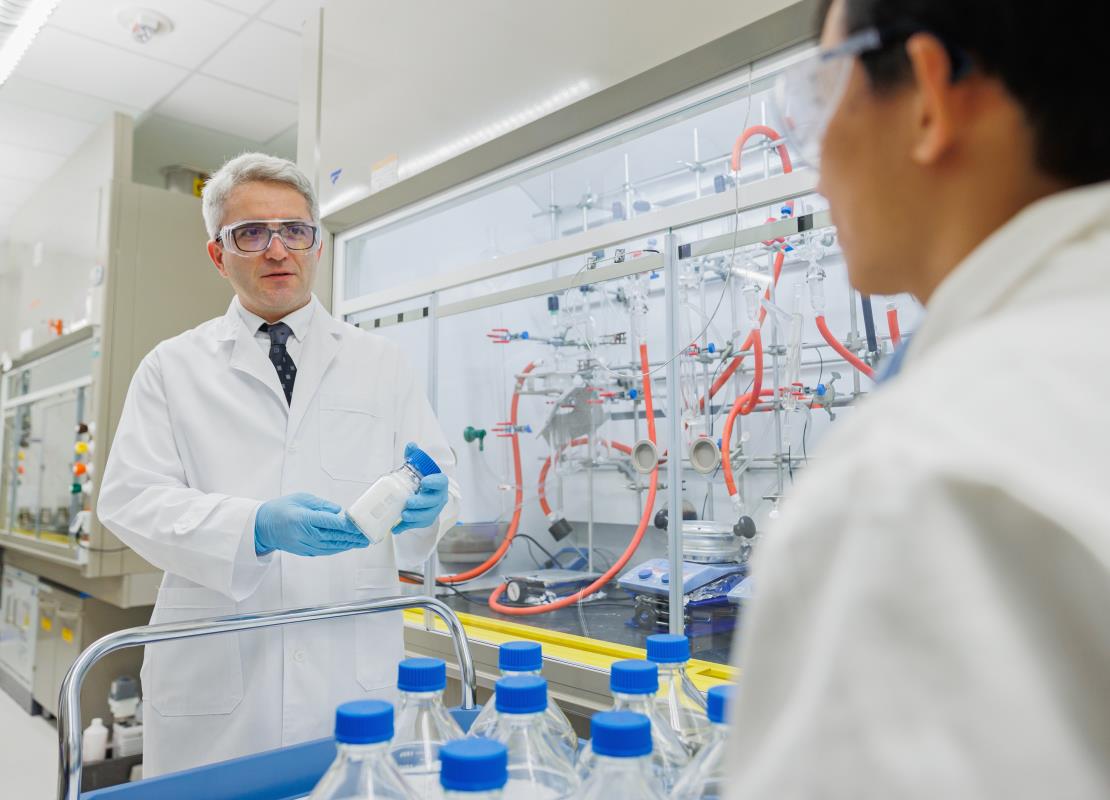Join us!
Postdoctoral scholars, PhD students, and technicians in chemistry or materials science The Yavuz Lab (http://onelab.kaust.edu.sa) at King Abdullah University of Science and Technology (KAUST) is accepting applications for multiple open positions at the ranks of postdoctoral scholars, Ph.D. students, and technicians. Successful candidates will conduct research on the synthesis of nanomaterials for applications in energy and the environment. Submit your CV on https://kaustforms.formstack.com/forms/yavuzlab_open_positions_form for consideration. Applications will be reviewed on a rolling basis and will be taken into consideration until the positions are filled.
Dry reforming of methane by stable Ni–Mo nanocatalysts on single-crystalline MgO
Large-scale carbon fixation requires high-volume chemicals production from carbon dioxide. Dry reforming of methane could provide an economically feasible route if coke- and sintering-resistant catalysts were developed. Here, we report a molybdenum-doped nickel nanocatalyst that is stabilized at the edges of a single-crystalline magnesium oxide (MgO) support and show quantitative production of synthesis gas from dry reforming of methane. The catalyst runs more than 850 hours of continuous operation under 60 liters per unit mass of catalyst per hour reactive gas flow with no detectable coking. Synchrotron studies also show no sintering and reveal that during activation, 2.9 nanometers as synthesized crystallites move to combine into stable 17-nanometer grains at the edges of MgO crystals above the Tammann temperature. Our findings enable an industrially and economically viable path for carbon reclamation, and the “Nanocatalysts On Single Crystal Edges” technique could lead to stable catalyst designs for many challenging reactions.
Direct Access to Primary Amines and Particle Morphology Control in Nanoporous CO2 Sorbents
Chemical tuning of nanoporous, solid sorbents for ideal CO2 binding requires unhindered amine functional groups on the pore walls. Although common for soluble organics, post-synthetic reduction of nitriles in porous networks often fails due to insufficient and irreversible metal hydride penetration. In this study, a nanoporous network with pendant nitrile groups, microsphere morphology was synthesized in large scale. The hollow microspheres were easily decorated with primary amines through in situ reduction by widely available boranes. The CO2 capture capacity of the modified sorbent was increased to up to four times that of the starting nanoporous network with a high heat of adsorption (98 kJ mol−1). The surface area can be easily tuned between 1 and 354 m2 g−1. The average particle size (ca. 50 μm) is also quite suitable for CO2 capture applications, such as those with fluidized beds requiring spheres of micron sizes.
Precious metal recovery from electronic waste by a porous porphyrin polymer
Urban mining of precious metals from electronic waste, such as printed circuit boards (PCB), is not yet feasible because of the lengthy isolation process, health risks, and environmental impact. Although porous polymers are particularly effective toward the capture of metal contaminants, those with porphyrin linkers have not yet been considered for precious metal recovery, despite their potential. Here, we report a porous porphyrin polymer that captures precious metals quantitatively from PCB leachate even in the presence of 63 elements from the Periodic Table. The nanoporous polymer is synthesized in two steps from widely available monomers without the need for costly catalysts and can be scaled up without loss of activity. Through a reductive capture mechanism, gold is recovered with 10 times the theoretical limit, reaching a record 1.62 g/g. With 99% uptake taking place in the first 30 min, the metal adsorbed to the porous polymer can be desorbed rapidly and reused for repetitive batches. Density functional theory (DFT) calculations indicate that energetically favorable multinuclear-Au binding enhances adsorption as clusters, leading to rapid capture, while Pt capture remains predominantly at single porphyrin sites.
Welcome To Yavuzlab
At the Oxide and Organic Nanomaterials for Energy & Environment Laboratory, we design and make new nanomaterials from oxide or organic building blocks to offer sustainable solutions for the pressing issues such as carbon dioxide capture and water treatment. Please note that we'll be using www.YavuzLab.com for our new website.

Research Interests
Yavuzlab's interests focus on developing sustainable nano &porous materials chemistry to address global challenges in the environment, particularly those related to CO2, water, and methane. His current projects include dry reforming of methane for circular carbon economy, CO₂ capture with tethered amines, CO₂ conversion to cyclic carbonates, water capture from air, methane storage in porous polymers,electrocatalytic water splitting, electronic waste recycling, seawater mining, and micro pollutant removal from water.